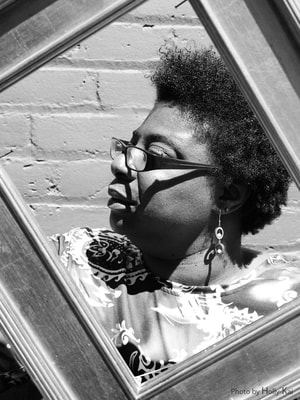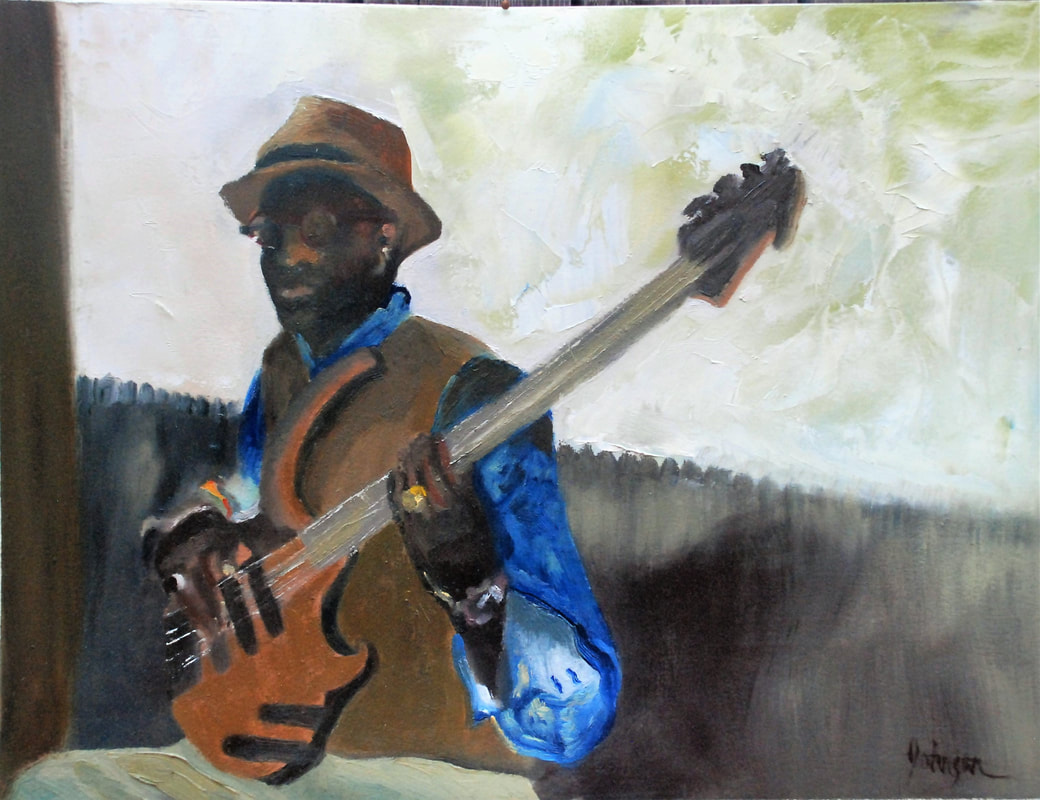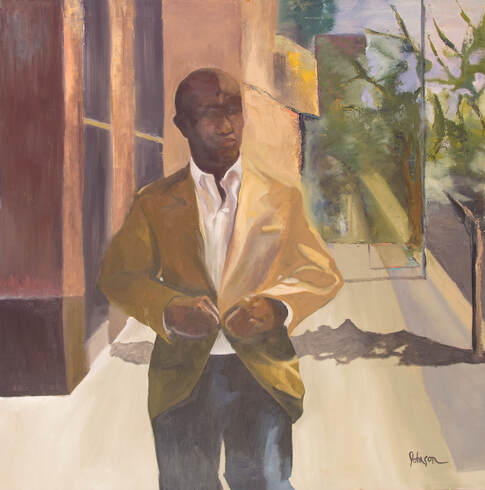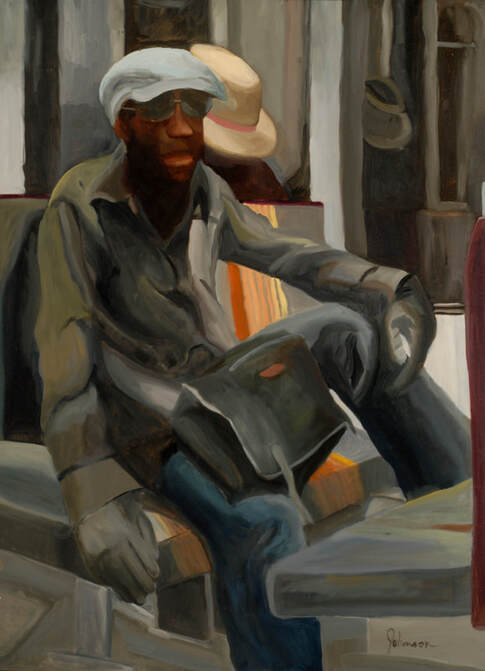|
In his statement last week, NAMI national CEO Dan Gillison said that the organization is “early in our intentional Diversity, Equity and Inclusion journey.” Without question, that’s true of NAMI Colorado Springs as well. We’re a small, mostly white group with much to learn about the communities of color that we seek to better serve. One of the best ways to learn, of course, is to listen. So at this time of anger, anxiety, protest and reckoning, we’re talking about racism and mental health with people of color who live with mental illness.  Rochelle Johnson (All images courtesy of the artist) Rochelle Johnson (All images courtesy of the artist) Over the weekend, Max Maddox, an artist, author, In Our Own Voice state trainer and a project manager for NAMI’s Array Parity program, interviewed Rochelle Johnson, a fellow artist and Denverite. Years ago, Rochelle joined a Connection Support Group, where peers helped her better understand her schizoaffective disorder. “I was searching for some answers then about why this was happening to me, and how do I deal with it,” she says. “I met a lot of good people that were suffering from mental illness and were searching for the same thing.” Rochelle currently manages her illness with the help of the Mental Health Center of Denver and through drawing and painting, for which she was recently featured in Westword. Creating art helps her manage her stress and her symptoms, while also giving her a way to make statements about social justice. “I’m pretty sure change is on the horizon,” she says. Note: Questions and answers have been edited for length and clarity. Max: Can you share some of your story, Rochelle? Rochelle: After I graduated from art school, I moved to Seattle, in 1992. In 1999, I had my first break. It stemmed from working at an association there where I experienced a lot of hostility and stress, and a lot of it was about race. That really was my first attempt to work in corporate America, and my skin color presented a problem for most of the employees there — so much so that eventually I experienced my first break and they fired me, took my medical insurance away, and I was left to fend for myself. … I wouldn’t stay in the hospital in Seattle so [my parents] took me back to Denver and I got treated here, which is where I’m from. … The second break was when I worked at an art organization and I experienced the same kind of racism. This time I spoke up and left before it got too bad, but eventually I was hospitalized after I left that situation. Once again I had to start from zero and build myself back up. During all that time I was working on becoming an artist. So my journey is intertwined with art and hospitals. [Laughs.] Max: Can you say more about what your relationship with what the mental health system has been like? NAMI always wants to know how to work with the black community. This question about how to adapt our narrative of mental health to make sense to the black community … there’s always been this question since I started working with NAMI. Rochelle: I think it's all due to the location — where we are at. Colorado has fewer black people living here, per capita, than most major metropolitan areas. But there are black psychiatrists and black representatives that have their own thing going on around black mental health. I don't really know if it really has a lot to do with the church, or the fact that NAMI doesn’t really reach out to the community. It could be that right now, the community is all spread out. Five Points used to be a destination for people to find black people in general, their location, but not anymore. There is a percentage of black folks that deal with mental illness. Right now, during this time of the pandemic, people are grieving — and I guess that could be considered a mental illness, or not, just a mental wellness issue. People are grieving and may not know how to navigate that. Myself, I’m kind of numb. I’m numb to the fact that black men are being killed, black people are being killed, and the nation is doing nothing about that. There’s no response. So maybe it's time to talk about grief, the stages of grief, how you can manage that on a day-to-day basis. I’m managing my mental health issues right now, but I’ll tell you it's hard for me not to cry. Or even talk about the issues when I turned on my social media and saw a man’s life just be taken. How do I rationalize that? It was during the day! It was on social media. And the way the nation is dealing with it, I think is a good way, protesting, peaceful protesting, talking. Of course there’s always the rioters, but hell, if a certain group of people just want to focus on the rioting and the looting, I think there’s something wrong with them mentally. So, as a nation I think we need to talk about mental illness, mental well-being, how we can heal from this. Max: I love that you put this in terms of grief. I mean we’re talking about a dead man right now, we’re talking about dead people … I think that’s part of all our helplessness — and that part of the grief is to experience this helplessness, too. How has your studio work played into this: the social-political aspect of it, the healing aspect of it …? Rochelle: My work has always had a focus on the black community, how black people are doing now, how they spend their day-to-day time. Specifically I focus on black men, because I know they are more of a target than the rest of us. There is a longing, and an emotional connection, I have when they move into white spaces. I know at some point they will be villainized, because I go through that. How they react and how they relate in those spaces has always been something that I’ve captured in my paintings.
Right now my practice is going to be talking about both of the pandemics: COVID-19 and the killing of black people. I’ve always been one to paint everybody, but at this point I think the focus should be on black lives, because black lives matter. You can follow Rochelle on Instagram at @rochellejohnsonstudio. Check out and purchase her work, and find Rochelle’s contact information, at rochellejohnsonstudio.com.
0 Comments
Leave a Reply. |
AboutOccasional news items and tidbits from the office of NAMI Colorado Springs. Archives
June 2022
|
DONATE |
FIND A PROGRAM |
VOLUNTEER |
BECOME A MEMBER |
© National Alliance on Mental Illness - Colorado Springs. All rights reserved.
Pikes Peak homepage photo by NAMI volunteer Mike Pach.
Pikes Peak homepage photo by NAMI volunteer Mike Pach.




 RSS Feed
RSS Feed